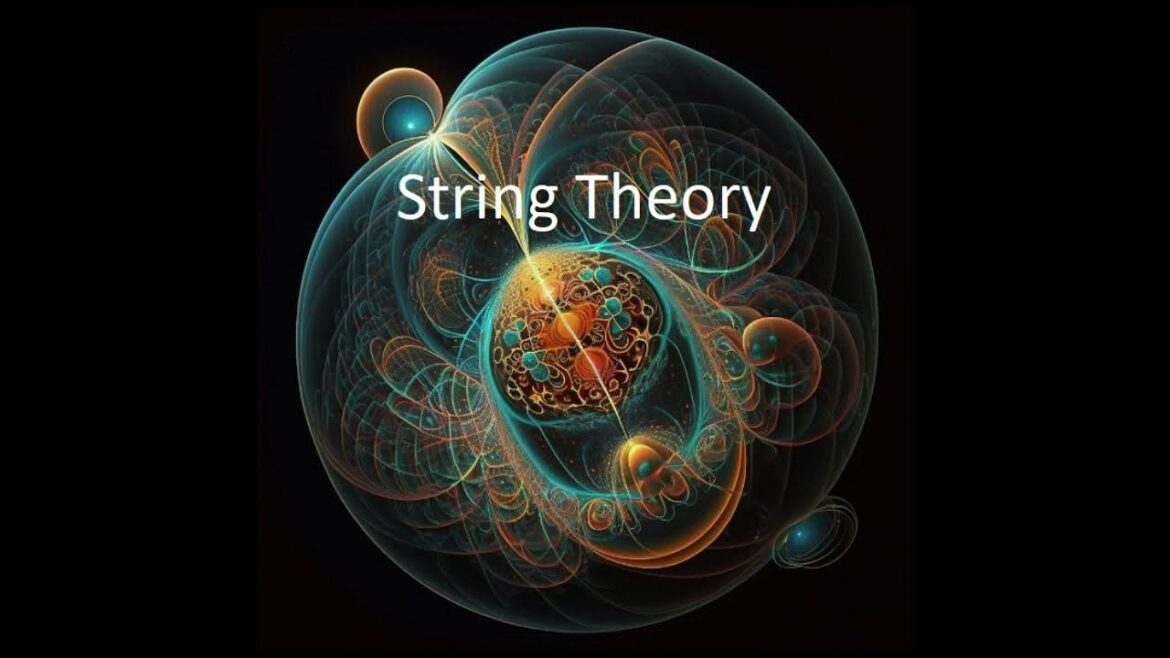161
For beginners, string theory is initially a fascinating but highly abstract concept, which states that the fundamental building blocks of the universe are not point-like particles, but tiny, vibrating strings of Planck length.
String theory for beginners: Origin and basic idea
String theory emerged in the late 1960s and early 1970s, initially as an attempt to describe the many elementary particles and forces in nature in a unified way, especially in the area of strong interaction.
- Scientists noticed that many phenomena could be explained by models if particles were viewed not as points, but as small, one-dimensional “strings.”
- Bosonic string theory was one of the first variants and describes only bosons, i.e., particles with integer spin, but it encounters problems, e.g., the existence of tachyonic states (particles with imaginary mass) and the fact that fermions (particles with half-integer spin) are not included.
- The theory was later developed into superstring theory, which includes both bosons and fermions and applies the principle of supersymmetry—that is, for every boson there is a fermionic partner. This development was important in overcoming the weaknesses of bosonic theory.
How the theory works: Vibrations, dimensions, and compactification
The basic idea is that all matter and all interactions consist of tiny, vibrating strings.
- Different types of vibrations of these strings produce different particles with different properties such as mass, charge, or spin—similar to a string on a musical instrument, where different vibrations produce different tones. A string can be open (with endpoints) or closed (ring-shaped), and depending on how it vibrates, a specific particle property manifests itself.
- For this theory to work mathematically consistently, it requires more than our familiar four dimensions (three spatial, one temporal). In Bosonic string theory, these are 26 dimensions, and in superstring theory, 10 dimensions. The additional dimensions are postulated to be “rolled up” or compactified on a microscopic scale—that is, we do not perceive them in our everyday lives because they are very small or hidden in special topological structures.
- A common model for this are so-called Calabi-Yau manifolds, special space forms that can accommodate the six additional spatial dimensions of superstring theory without violating the known laws of physics.
Ambition and current situation
The main goal of string theory is to unite quantum theory (which describes the behavior of particles in the microcosm) and general relativity (which deals with gravity and the behavior of space and time in the macrocosm) in a unified framework.
- So far, these two theories are not fully compatible, especially when considering very small distances (Planck scale) or very strong gravity (e.g., black holes). String theory could be a “world formula” in which both are brought together.
- There are different variants of superstring theory, e.g., Type I, Type IIA, Type IIB, heterotic theories (E₈×E₈ and SO(32)), which differ in the type of strings (open/closed), number of supersymmetries, and properties.
- At present, there is still no experimental evidence that clearly confirms string theory. Supersymmetric partner particles have not yet been found, nor have additional dimensions been measured.
- Many of the mathematical structures, compactifications, and selections of Calabi-Yau manifolds are the subject of intensive research, and their effects on observable physical phenomena are still hypothetical.

